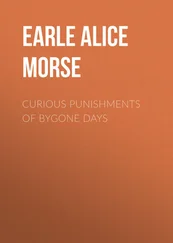Various - Bygone Berkshire
Здесь есть возможность читать онлайн «Various - Bygone Berkshire» — ознакомительный отрывок электронной книги совершенно бесплатно, а после прочтения отрывка купить полную версию. В некоторых случаях можно слушать аудио, скачать через торрент в формате fb2 и присутствует краткое содержание. Жанр: foreign_prose, на английском языке. Описание произведения, (предисловие) а так же отзывы посетителей доступны на портале библиотеки ЛибКат.
- Название:Bygone Berkshire
- Автор:
- Жанр:
- Год:неизвестен
- ISBN:нет данных
- Рейтинг книги:3 / 5. Голосов: 1
-
Избранное:Добавить в избранное
- Отзывы:
-
Ваша оценка:
- 60
- 1
- 2
- 3
- 4
- 5
Bygone Berkshire: краткое содержание, описание и аннотация
Предлагаем к чтению аннотацию, описание, краткое содержание или предисловие (зависит от того, что написал сам автор книги «Bygone Berkshire»). Если вы не нашли необходимую информацию о книге — напишите в комментариях, мы постараемся отыскать её.
Bygone Berkshire — читать онлайн ознакомительный отрывок
Ниже представлен текст книги, разбитый по страницам. Система сохранения места последней прочитанной страницы, позволяет с удобством читать онлайн бесплатно книгу «Bygone Berkshire», без необходимости каждый раз заново искать на чём Вы остановились. Поставьте закладку, и сможете в любой момент перейти на страницу, на которой закончили чтение.
Интервал:
Закладка:
In 1700, the Duke of Gloucester, the longest lived of all Anne's nineteen children, died at Windsor, to the great grief of the nation. It was in one of the rooms now forming part of the Royal Library, of this castle that Queen Anne was sitting with the Duchess of Marlborough, when the news of the great victory of Blenheim arrived.
The first and second Georges did not care for Windsor, but it was a favourite residence of George III., but into such dilapidation was it allowed to fall, that in 1778 it was declared uninhabitable. It was therefore resolved to keep what was standing from falling into ruins, but to build a new lodge on the site of the house which Queen Anne preferred as a residence to the magnificence of the Castle.
The new residence was a long, narrow building with battlements facing north towards the old Castle walls. It was here that Queen Charlotte lived when Fanny Burney, the author of "Evelina," afterwards known as Madame d'Arblay, was her maid-of-honour. According to Miss Burney's diary, the life at Windsor must have furnished anything but the excitement which is supposed to be the necessary element of court life. At eight o'clock, the king and queen attended prayers in the private chapel. In the afternoon, the king and queen and the princesses walked on the terrace. On this terrace, by-the-by, there is a sun-dial, which was the cause of an interesting little incident. The King and the Duke of York were one day walking on the terrace, when the king leant his arms on the sun-dial. A sentry immediately came forward and respectfully, but decidedly, informed the king that it was part of his duty to prevent any person from touching the dial. The king was so charmed, that he commended the soldier to his colonel, and he was shortly afterwards promoted. Every evening there was music in the concert-room, the king being very fond of Handel. In 1788, Miss Burney describes one of the king's attacks. The Prince of Wales and his brother, and several doctors and equerries sat up all night, whilst the king raved up and down an adjoining room, and made occasional excursions in various apartments, addressing wild accusations of neglect to each and every of his attendants, till at length, Mr. Fairly, one of them, led him gently but forcibly away. During the king's illness, the Prince of Wales and Duke of York lodged in the Castle, and even held formal dinners there, whence it may be deduced that formerly even the royal kitchen in the Castle had fallen into desuetude.
Although the Queen's Lodge was now the chief royal residence, some attention was paid to the restoration of the ancient Castle, and in 1800, James Wyatt built a new staircase, and also restored some apartments looking on to the north terrace, whither the old king was removed during his last attack. On his death, he was laid under the chapel at the east end of St. George's, in the vault which in 1810 had been erected for his daughter Amelia.
During the reigns of George IV. and William IV., James Wyatt's brother, Jeffry Wyatt, whom George IV. knighted and called Wyatville, continued the work of restoration, and gradually nearly all traces of the Castle as it was during the latter part of the eighteenth century disappeared. He raised the Round Tower to its present height, designed the plan for the east and west sides of the Upper Ward, raised the level of all the roofs, filled up the Brick Court with a grand staircase, and the Horn Court with the Waterloo Gallery, united the stables, which were dotted throughout the Town, on Castle Hill, and built the Brunswick Tower, and the York and Lancaster Tower. It is to Wyatville's good taste and fine artistic perceptions that we owe the fact that Windsor retains its characteristics of a mediæval fortress, and has not been converted into a stiffly symmetrical building, then so much affected.
George IV.'s favourite residence was a lodge near the Long Walk, but two years before his death he removed to the Castle, and his long illness kept him prisoner here till his death. In the same room, later on called the Queen's Drawing-room, exactly seven years later, King William also died.
The chapel of St. George was made a Chapel Royal by Edward III. in 1348. The office of dean was, till the reign of Henry IV., held by a dignitary designated by the name of "custos." John Arundel, in Henry IV.'s reign, being the first to bear the title of "dean." At first the chapel was dedicated to St. Edward, but gradually, owing to its connection with the Order of the Garter, St. George superseded the former patron saint. Later on, Henry VII. had intended to make this chapel the tomb of his race, and the work was actually commenced when the king turned his attention to Westminster. Henry VIII. presented the chapel to Wolsey, and, about 1524, the Cardinal employed Benedetto of Florence to build a sumptuous sarcophagus of black marble, decorated with figures of copper gilt. After his disgrace, the magnificent metalwork lay neglected till the governorships of Colonel Venn and Colonel Whichcott, when these functionaries sold various figures and images as old brass, and realised a very handsome sum by the transaction. In 1805, the marble sarcophagus was removed to St. Paul's, to mark the grave of Lord Nelson.
In 1686 when James II. was mis-ruling the land, he expended some £700 on repairing the chapel and in solemnizing high mass. In George III.'s reign the chapel was made the Royal Mausoleum, and Princess Amelia was the first to be interred in it. His wife, his sister, and six of his children and grandchildren were buried in the vault before George himself. There is room for forty-nine coffins, and already twenty-one have been placed in it, the Duke of Clarence and Avondale having been the last. Although the Prince Consort is buried at Frogmore, Wolsey's Tomb-house was selected as the site for the magnificent memorial in his honour. The interior of the chapel is lined with marble and mosaic, the walls are covered with reliefs, the windows are of stained glass. The cenotaph stands in front of the magnificent altar, and supports a recumbent statue, a personification of the Christian soldier described by St. Paul, of white marble, the face being a portrait of the Prince. A hound, a portrait of the Prince's favourite dog Eos, sits at his feet. This chapel, built by Henry III., and dedicated to St. Edward, and later on, known as Wolsey's Tomb-House, remains now as the Albert Memorial Chapel, one of the most splendid monuments of the age. In the State Apartments there are many articles interesting on account of antiquity or associations. The Malachite Vase in the Ball Room is the best of its kind in England, the French tapestry is said to be unequalled, the Sévres porcelain is exquisitely delicate and beautiful. Many picture-frames, especially in the ante-room, are to be found, the work of Grinling Gibbons. Portraits by Vandyck in his best style abound, and there is a splendid series of portraits by Holbein. In the Guard Chamber there is a shield presented by Francis I. to Henry VIII. on the field of the Cloth of Gold, the work of Benvenuto Cellini.
The Library at Windsor is remarkably large and good, William IV. having gathered here the various collections at Kew, Hampton Court, and Kensington, and having brought to light many antiquarian treasures. Amongst these are the three volumes of the collection of drawings of Leonardo de Vinci, brought to England from Holland by Sir Peter Lely, and bought by Charles II., and the series of eighty-seven studies in red chalk and Indian ink of the principal personages of Henry VIII.'s Court by Hans Holbein. The illuminated manuscripts, both European and Oriental are of much historical interest, and amongst them may be mentioned the "Mentz Psalter," of 1457, a copy of Coverdale's Bible of 1535, and the only perfect copy now in existence of Caxton's Æsop's Fables of 1484.
In the strong room are many gorgeous treasures of plate and jewels, and a set of golden dinner plates sufficient for a hundred guests, a wine-fountain taken from the Spanish Armada, Tippoo's jewelled peacock and solid gold footstool, in the shape of a tiger's head, and many other curiosities too numerous for mention. Some of the state apartments, especially the library, contain fine mantelpieces and panellings of great age, some going as far back as the sixteenth century.
Читать дальшеИнтервал:
Закладка:
Похожие книги на «Bygone Berkshire»
Представляем Вашему вниманию похожие книги на «Bygone Berkshire» списком для выбора. Мы отобрали схожую по названию и смыслу литературу в надежде предоставить читателям больше вариантов отыскать новые, интересные, ещё непрочитанные произведения.
Обсуждение, отзывы о книге «Bygone Berkshire» и просто собственные мнения читателей. Оставьте ваши комментарии, напишите, что Вы думаете о произведении, его смысле или главных героях. Укажите что конкретно понравилось, а что нет, и почему Вы так считаете.

![Various Various - Selected List of Nimmo, Hay, & Mitchell's Publications [1890]](/books/571841/various-various-selected-list-of-nimmo-hay-mit-thumb.webp)










